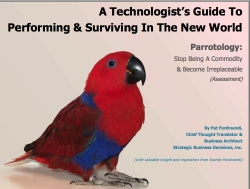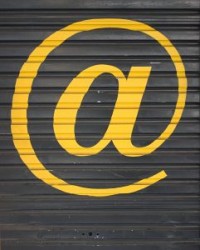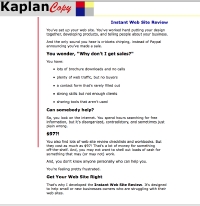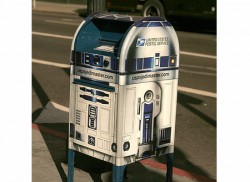 You may be thinking, parrots? Why the heck is she talking about parrots?
You may be thinking, parrots? Why the heck is she talking about parrots?
It turns out that parrots are very good at getting a person’s attention, and using people language (not parrot language) to get what they want.
Where does the technology part come in? Because technology experts often have trouble translating “geek” speak into business language. And, clients often have difficulty explaining what they want in terms that make sense to technology experts.
You know how it is. You patiently explain to your client that IE’s render engine is no good. You tell them that their code isn’t web standards-compliant and you’ll have to rewrite it. And they look at you as if you have completely lost your mind.
How to bridge this communication gap
Pat Ferdinandi (along with Scarlet, her parrot), has put together this free assessment called “A Technologist’s Guide to Performing & Surviving in the New World: Parrotology: Stop Being a Commodity & Become Irreplaceable.”
It’s designed to help technology types (computer geeks, developers, coders, you know who you are), communicate better with business people.
Pat’s assessment will help you:
- analyze your ‘business speak” skills
- transform yourself from a commodity into a trusted adviser
- earn more money
- gain recognition for the time, money, and effort you save your clients
- build word of mouth that will help you get clients coming to you (instead of the other way around)
Like the book? Like this post? Pass it on.



